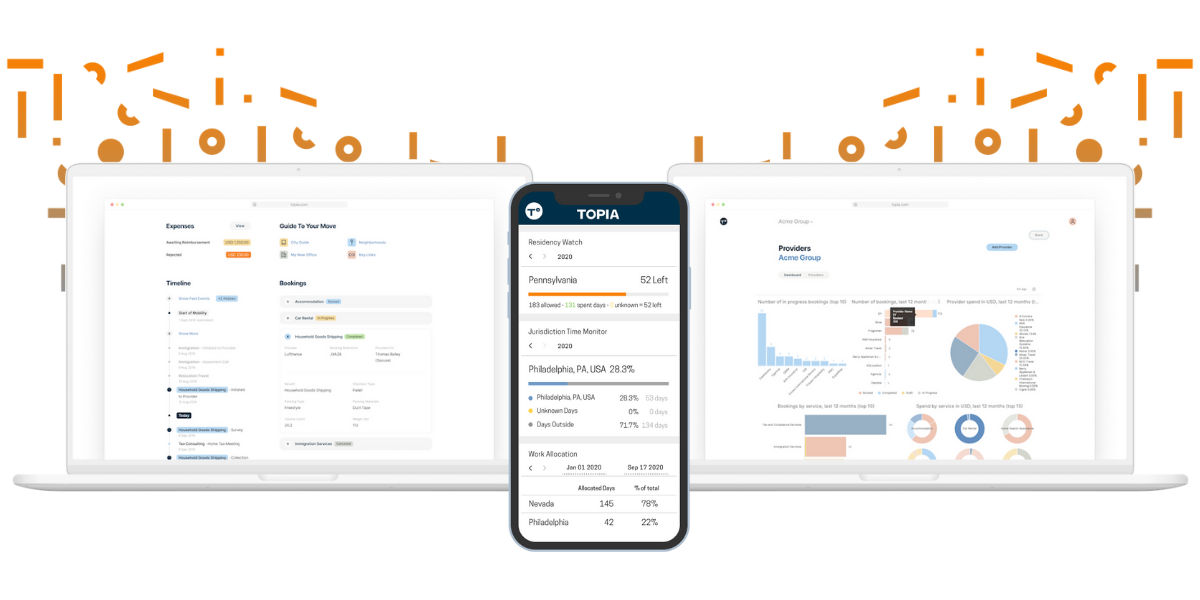Technology Innovation in HR – It’s not just for “Tech” companies
At first glance, you might assume that new HR technologies may resonate better with companies in a particular industry such as technology startups, media and advertising companies, fashion brands. However, when we break down the challenges that HR teams face when dealing with Global Mobility, it’s clear to see why ‘technology first’ solutions actually resonate closely with heavily regulated and more ‘traditional’ industries, such as Financial Services (FS), Oil & Gas and Aerospace & Defense.
Global Mobility professionals within these sectors are constantly faced with the following challenges:
A truly global workforce, with employees often covering multiple markets and HR needing to react quickly and fluidly to business needs
A tough regulatory atmosphere, with a strong reliance on internal controls and a high price of failure to meet compliance standards
A low company risk profile, with frequent and stringent internal and external audit procedures
A strong focus on accountability to internal management, government bodies and the public, with a need to directly demonstrate value
Increased attention and scrutiny from tax, social security and immigration authorities
High risk of negative public attention for failure to comply with regulatory requirements
Constant pressure to streamline non-income producing work streams, such as HR and operations, demanding strategic partnership with the wider business
A push for ‘digitalization’, providing both their customers and their employees with digital tools and options which promote flexible and modern user experiences
An extremely competitive talent pool, with a need to drive market leading employee experiences and support all the way from interns to senior executives
Traditionally, in the Global Mobility space, these challenges have been handled through ‘bodies’ armed with checklists, procedures and multiple layers of manual review and balances. However, companies in these sectors are increasingly looking to reclaim visibility and control of their data and metrics, all on a real-time basis. This enables a proactive approach to confronting challenges and strategic demands of the business, while improving the experience for their mobile employees.
In tightly controlled industries, where every transaction is scrutinized and every dollar balanced on the front end, it can be unfathomable to the C-Suite that millions of dollars can be spent on employee costs for mobile employees with little tracking, accountability, oversight and reconciliation. Given the historical tools available, Mobility teams have struggled to record the various costs incurred to support employees across multiple countries, by multiple parties, in multiple of currencies, and through no fault of their own. Utilizing manual processes through spreadsheets and emails open the company up to both operational and compliance risks, while leaving no room for cost review or strategic optimization. This is one of the key drivers behind companies in these spaces looking to leverage the capabilities of new technology-based tools.
When we look at some of the other key challenges facing HR teams in complex industries, we can clearly see one overriding issue – lack of consolidated data. For example, the annual compensation review process for an FS mobility team can be a suffocating time of the year. Teams apportion bonuses and deferred incentive payments between different jurisdictions over a period as long as ten years, calculate salary increases and bonus payments looking over different global bonus pools and make split payments across various global payrolls to ensure tax compliance. Many of the challenges Mobility teams face with this process result from not having a central point of mobility data. This includes establishing the mobile population and tracking details, such as home and host locations, dates of mobility, business lines, cost centers and the location of payroll, which can then be overlaid with the data sitting in Compensation & Benefits platforms.
Today’s mobility tools are also more than just consolidation of data. Instant cost estimation tools providing year by year accrual figures, lookup tables and integrations with data sources to immediately calculate rates and allowances and configuration of logic in the platform surrounding regulation are just part of the intuitive functionalities being incorporated to make the lives of mobility teams easier. In addition, the ability for these tools to integrate directly with other HR systems, such as HRIS, ATS, T&E platforms and C&B systems is game changing.
There is also a misconception that technology equals a decrease in the quality or personalized nature of the employee experience – this just simply is not true. Many poor employee experiences are the result of the current challenges in the industry – ie. rigidity in policy structure not allowing for personalized benefits, or multiple payroll adjustments throughout the year as new information comes to light. Employees want to be able access data at their own convenience, get real-time updates in one place and be empowered to control their own moves efficiently with real value-added support coming from their move consultants.
Overall, the most challenging and competitive industries are crying out for technology innovation for mobility that brings data, control, and intelligent automation together to drive efficiency and risk minimization. These spaces can also be the slowest to act and the most difficult to drive towards change, and mobility teams need to work closely with solution providers to build a strong strategic business case. Together, they can champion the change throughout multiple layers of their organization to ensure a successful purchase and transition to a new and innovative way of working.



